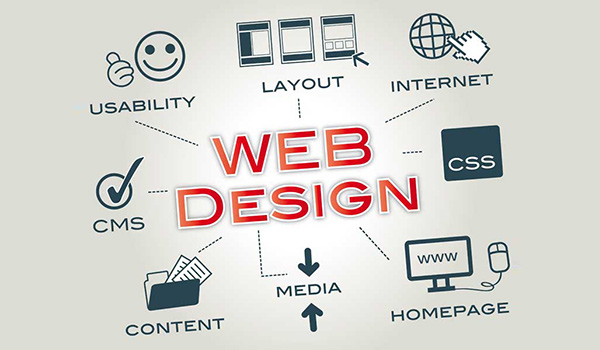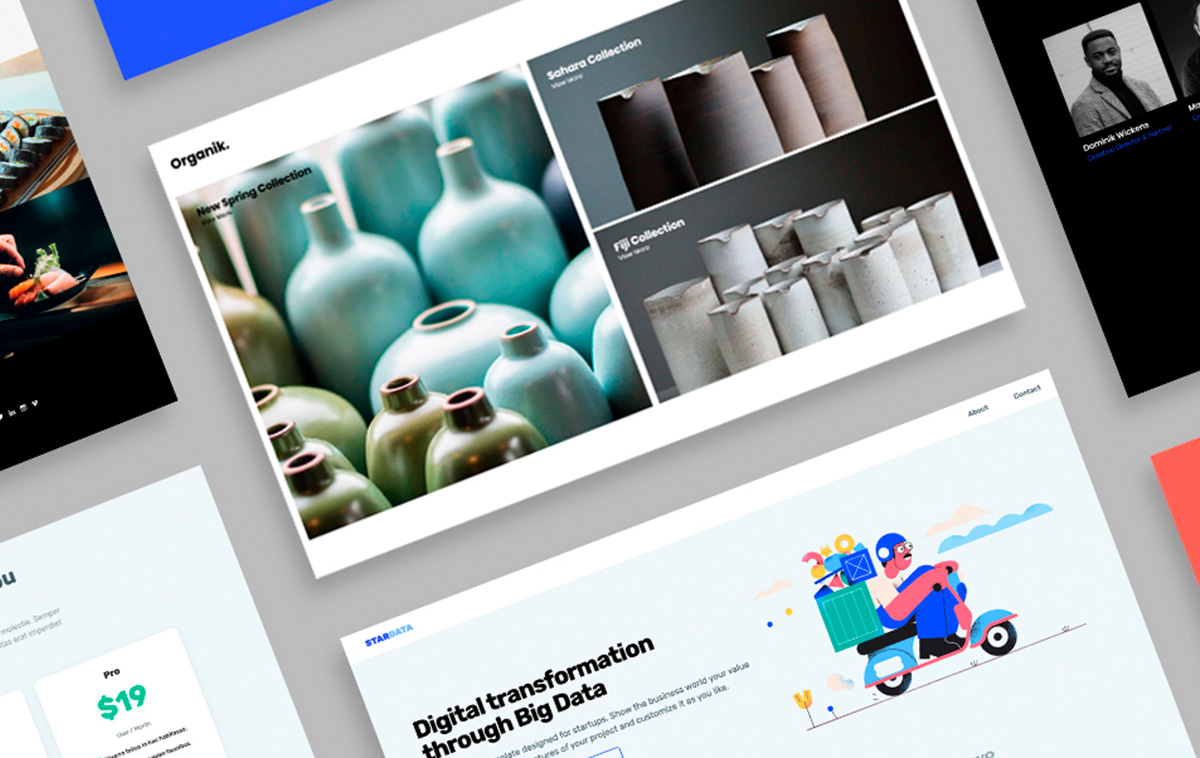Aligned Position Web Design: Perfectly Designed Websites to Capture Your Audience’s Attention
Aligned Position Web Design: Perfectly Designed Websites to Capture Your Audience’s Attention
Blog Article
The Ideal Types of Web Style to Improve User Experience and Involvement
In the ever-evolving landscape of digital communication, the efficiency of Web design substantially affects customer experience and engagement. Various design methods, such as minimalist, responsive, and interactive designs, each deal unique benefits that can provide to diverse user needs.
Minimal Web Design
As electronic landscapes come to be significantly chaotic, minimal Web style has become an effective method to enhancing customer experience. This layout viewpoint focuses on simplicity, concentrating on important elements while eliminating unnecessary interruptions. By making use of ample white room, straightforward navigation, and a restricted color combination, minimalist layout cultivates clarity and guides user interest to essential material.
The core principle of minimal website design is to create a smooth interaction for individuals. By reducing cognitive load, users can promptly realize details without really feeling bewildered. This straight strategy not only boosts use however additionally encourages engagement, as visitors are more probable to check out a website that is aesthetically attractive and easy to navigate.
Furthermore, minimal design frequently stresses typography and imagery, using these aspects purposefully to convey messages successfully. In essence, minimal Web layout is not simply a fad; it is a thoughtful methodology that acknowledges the value of user-centered design.
Responsive Web Design
In today's diverse digital atmosphere, responsive Web layout has ended up being vital for developing a smooth customer experience throughout a wide range of devices. As customers access sites on smartphones, desktop computers, tablet computers, and laptop computers, the capacity of an internet site to adapt its layout and web content to various display sizes and resolutions is essential.
Responsive website design employs adaptable grids, pictures, and CSS media queries to make certain that Web material exists ideally, regardless of the device made use of. This method not only enhances the aesthetic appeal of a web site yet additionally significantly enhances usability. Individuals are a lot more likely to engage with a site that offers a constant experience, as it eliminates the irritation of needing to zoom in or scroll excessively.
Furthermore, search engines, including Google, prioritize mobile-friendly websites in search rankings. By taking on responsive layout, services can enhance their visibility and reach a broader audience. This approach also simplifies site maintenance, as a solitary variation of the website can satisfy all gadgets, reducing the need for multiple versions. In recap, responsive Web style is a basic practice that boosts user experience, interaction, and general complete satisfaction.
Interactive Web Design
Responsive website design prepares for boosting individual experience, however interactive website design takes this a step additionally by engaging customers in a much more dynamic way - Aligned Position Web Design. By including components such as computer animations, clickable models, and real-time responses, interactive Web style captivates users, drawing them right into a richer surfing experience
This strategy not only fosters engagement however likewise urges individuals to explore content actively rather than passively consuming it. Methods such as gamification, where individuals make rewards for finishing tasks, can dramatically improve the moment invested on a website and boost general complete satisfaction. Interactive functions can simplify complex information, making it a lot more digestible and satisfying.

Incorporating interactive style components can additionally cause higher conversion prices, as individuals are more probable to engage with a website that actively involves them. Aligned Position Web Design. Eventually, interactive Web style transforms customer experiences right into remarkable journeys, ensuring that site visitors return time and again
Flat Design
Defined by its minimalistic approach, flat layout emphasizes simpleness and capability, removing unneeded aspects and concentrating on crucial attributes. This layout philosophy prioritizes usability, ensuring that individuals can navigate interfaces easily and performance. By employing a tidy visual, flat style gets rid of the mess often discovered in a lot more ornate designs, consequently boosting user concentrate on web content and performance.
The trademark of level design depends on its usage of strong colors, simple typography, and geometric forms. These elements add to an aesthetically appealing user interface that is both modern and friendly. Additionally, level layout promotes a feeling of quality, enabling users to recognize important actions and details without disturbance.
In addition, flat design is particularly reliable in receptive Web style, as its simplicity equates well throughout numerous gadgets and display sizes. By focusing on important functions, flat layout not just satisfies customer requirements but also urges seamless interaction, making it an important element of reliable Web layout strategies.
Adaptive Web Style
Adaptive website design tailors the individual experience by developing numerous fixed layouts customized to different screen sizes and devices. Unlike responsive style, which fluidly adjusts a single layout, adaptive style uses distinct layouts for certain breakpoints, guaranteeing optimal discussion on numerous systems. This technique allows designers to concentrate on the distinct characteristics of each gadget, improving use by delivering precisely what individuals require based upon their context.
Among the main advantages of adaptive Web style is its capability to optimize lots times and performance. By serving tailored web this website content and pictures that fit the customer's tool, internet sites can reduce information use and improve loading speeds. This is particularly advantageous for customers with slower links or restricted data strategies.

In addition, flexible style helps with a much more controlled and regular branding experience. Given that developers create several layouts, they can make sure that the aesthetic browse this site elements line up with the brand name's identification throughout different platforms - Aligned Position Web Design. This results in a cohesive user experience, boosting interaction and advertising user retention
Conclusion
In conclusion, the integration of minimalist, receptive, and interactive website design principles significantly enhances customer experience and interaction. Minimal design promotes quality and emphasis, while responsive style ensures adaptability throughout various devices, promoting ease of access. Interactive style astounds individuals through dynamic elements, encouraging expedition and personalization. Jointly, these design comes close to add to the creation of user-friendly atmospheres that not just boost contentment but also drive greater conversion rates, underscoring their critical value in modern Web design strategies.

Minimalist design promotes clarity and focus, while responsive style ensures flexibility throughout numerous tools, promoting ease of access. Jointly, these style comes close to contribute to the production of straightforward settings that not just improve fulfillment but likewise drive greater conversion prices, underscoring their vital relevance in contemporary Web layout techniques.
Report this page